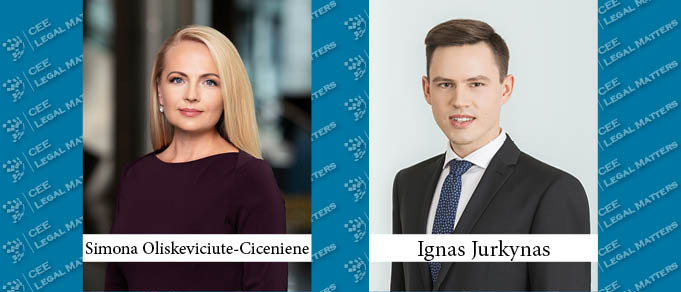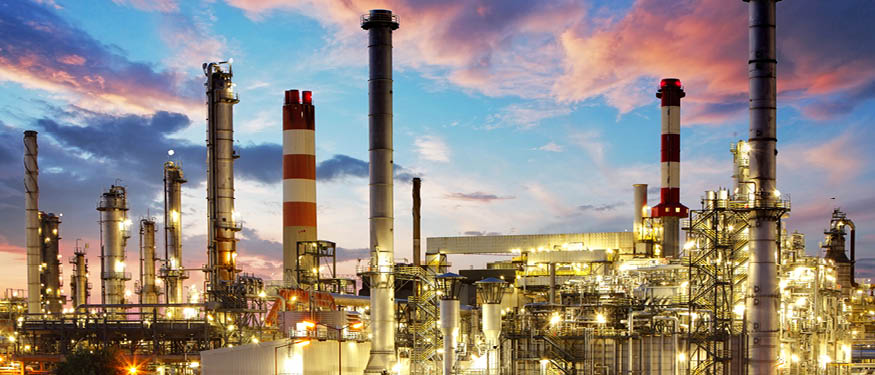Although Lithuania cannot boast rich oil resources lying beneath its territory, a number of large oil industry facilities are successfully operating in the country. This suggests that Lithuania has sufficient technical capacity to import oil and petroleum products from various countries, as well as diverse and technically ensured possibilities of supplying petroleum products. Moreover, the country has secured the required amount of petroleum product state reserves, which affords protection against disruptions in their supply.
Based on the legal framework applicable in Lithuania, the oil sector operates under market conditions: there are no legal restrictions on the transport of fuel from EU Member States or import of fuel from third countries; the prices are not state-regulated (except for liquefied petroleum gas supplied to group facilities) aside from excise tariffs and value-added tax; mandatory quality indicators are set for relevant petroleum products; and no transport or import quotas have been fixed.
Despite these oil supply and refinery facilities and business-friendly regulation of trade in petroleum products, seeing the trends in the transport system and global changes, Lithuania is gradually switching to consumption of less polluting fuels and electricity, flexibly and efficiently combining the existing infrastructure of the petroleum sector with the local potential offered by renewable energy resources.
As regards the gas sector, the situation on infrastructure capacity and regulatory framework is like that in the oil sector. At the end of 2014, with the construction of the liquefied natural gas terminal in Klaipeda, the implementation of the provisions of the EU Third Energy Package, and the construction of the second line of the Klaipeda–Kursenai gas pipeline in 2015 the situation in the natural gas market substantially improved. Lithuania gained access to natural gas on international markets, the monopoly of eastern market players in this field was abolished, and competition was created. Lithuania became self-sufficient in natural gas supply (and able to supply significant quantities to countries in the Baltic region) through the liquefied natural gas terminal alone, in case of disruption of supply from Russia, or a lack of competition in supply.
However, despite this positive progress in the development of infrastructure, the Lithuanian natural gas market remains isolated from the EU’s single market for natural gas. This problem will soon be resolved by the Gas Interconnection Poland-Lithuania project, which is approaching its final stages. This project will allow Lithuania to become an important gas transit and trading hub for the Baltic States and Finland.
It can be anticipated that additional revenue generated from the transmission of natural gas and regasification of liquefied natural gas will reduce the share of costs for the maintenance of the liquefied natural gas terminal and the natural gas transmission infrastructure to Lithuanian consumers. This has never been more relevant for Lithuanian consumers as, due to the increase in gas prices in the raw materials markets, a very sharp rise in the price of gas has been observed in Lithuania. In July, for instance, the price of natural gas for household consumers increased by 26 to 46 percent.
In relation to both gas and oil, it needs to be recognized and understood that, although today our economy heavily relies on these types of energy, these all are already past technologies, and, in our view, we will be seeing a decline in their popularity over time. As mentioned above, the Green Deal initiative in Lithuania and Europe has already led regulators and market participants to focus on the development of clean and green technologies. One of these is pure hydrogen technology. Notably, this technology and its market are in the development phase, so the market and regulators should already start preparing for the application of these technologies. Hopefully, the actors involved in the development, both national and EU institutions, as well as the market participants, will have a unified approach and coordinate their actions to create an environment conducive to the realization of the potential of new technologies, covering both investment and harmonious legal regulation, for the creation of an efficient market, research, and innovation.
By Simona Oliskeviciute-Ciceniene, Partner, and Ignas Jurkynas, Senior Associate, Cobalt Lithuania
This Article was originally published in Issue 8.8 of the CEE Legal Matters Magazine. If you would like to receive a hard copy of the magazine, you can subscribe here.













